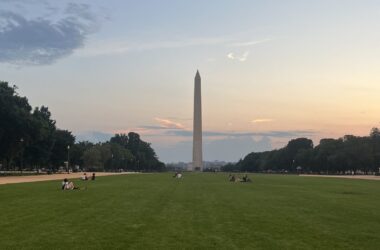Following the police killing of unarmed African-American teenager Michael Brown, unrest and anger spilled onto the streets of Ferguson, Missouri. The ongoing event has been marked by mostly peaceful protests, with incidences of violence. Aside from the circumstances surrounding Brown’s death, one of the big stories has been the militarized response from local police departments.
While police made public statements encouraging calm, their response on the ground in Ferguson has been anything but restrained. SWAT teams have fired tear gas and rubber bullets at protesters and media alike, while a 20 year veteran officer was forced to resign after pointing his gun at unarmed protesters while threating to kill them. Municipal police forces have been entering communities like soldiers, creating hostility and ultimately hampering efforts to bring peace to riot-torn areas.
Many police tactics designed to control crowds rely on fear and intimidation. Bright lights, megaphones, riot gear, and displays of firepower are often the method for exerting control over citizens.
These actions do not curb violence in these situations, and often can inflame it. Protesters who feel threatened by the police force may respond with violence in self-defence. This in turn is met with escalating violence from the police who, with superior weaponry, can easily injure and detain protesters who feel the need to defend themselves. Police uniforms and tactics separate riot officers from their surroundings, making them a more intimidating presence.
However, this has been shown to encourage more violence in past riots. Norm Stamper, Seattle’s chief of police during the 1999 World Trade Organization (WTO) riots, made the decision to employ the use of tear gas and rubber bullets against peaceful protesters in order to clear roadways for emergency vehicles. This led to retaliatory violence against police as solidarity formed among protesters who had been attacked by police, or sympathized with those who had. Similarly, in the 1992 Los Angeles riots following the Rodney King beating, another notable incident of police brutality, violence lasted for more than six days as shops were looted and buildings burned. The National Guard was called in, along with other forces, bringing the total number of troops directly supporting the LAPD to 13,500.
Although the National Guard quelled the violence and allowed firefighters to extinguish much of the burning city, its military presence did very little to ease tensions between the community and its police force.
Communication between police departments and citizens ranging from the highest levels of the department to officers talking to protesters on the streets is a critical element in easing tensions. Police departments often seal off information to citizens in a time of protest, asking citizens to wait for the investigation to be completed. Without including community members in the investigation, local anger intensifies as protesters feel isolated by their police departments, leading to further protests and violence.
Police officers no longer hold the role of protecting the community by working with its members. Instead, they see many communities as war-zones to be occupied and pacified. Police officers today are trained like soldiers, but a police officer’s job is very different from that of a soldier’s.
Police departments need to form relationships with the community rather than use weapons to gain control. Using violence and intimidation to prevent riots rather than letting protesters freely excercise their rights will only increase tension.








